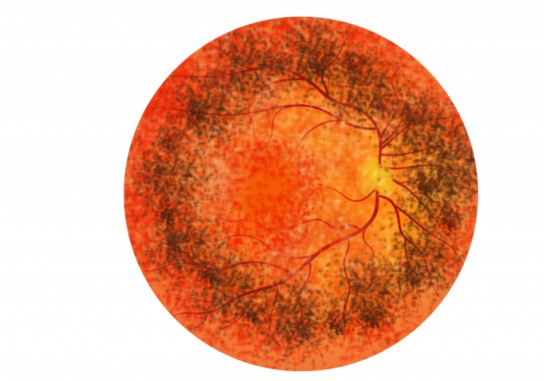Prevalence: < 1/106. Autosomal dominant transmission of mutations of the BEST1 gene (11q12), coding for bestrophin-1, specifically expressed in the retinal pigmentary epithelium. It forms a calcium-activated chloride channel involved in the regulation of voltage-gated calcium channels. It belongs to the group of the bestrophinopathies (see this term).
These mutations lead to abnormalities in eye development:
- microphthalmia, anophthalmia
- microcornea,
- hyperopia, severe myopia
- shallow anterior chamber,
- acute angle-closure glaucoma
- iris dysgenesis
- congenital or early posterior subcapsular cataract, following microspherophakia
- optic nerve dysplasia
- disc gliosis
Fundoscopy: abnormal chorioretinal pigmentation, usually extending 360° to the retinal periphery between the vortex veins and the ora serrata; discrete retinal edema; white punctate opacities of the retina, fibrillar vitreous condensation; vascular anomalies; neovascularization.

Some patients may experience vision loss. Color vision is generally normal. Discreet rotatory nystagmus may be present.
In the case of neovascularization, treatment may require laser photocoagulation or intravitreal administration of antivascular endothelial growth factors, such as bevacizumab and ranibizumab. Cystoid macular edema can be treated with carbonic anhydrase inhibitors, either systemically or topically. Treatment of glaucoma.
Anesthetic implications:
visual acuity usually well preserved, ocular protection. Treatment side effects.
References :
-
Updated: October 2023